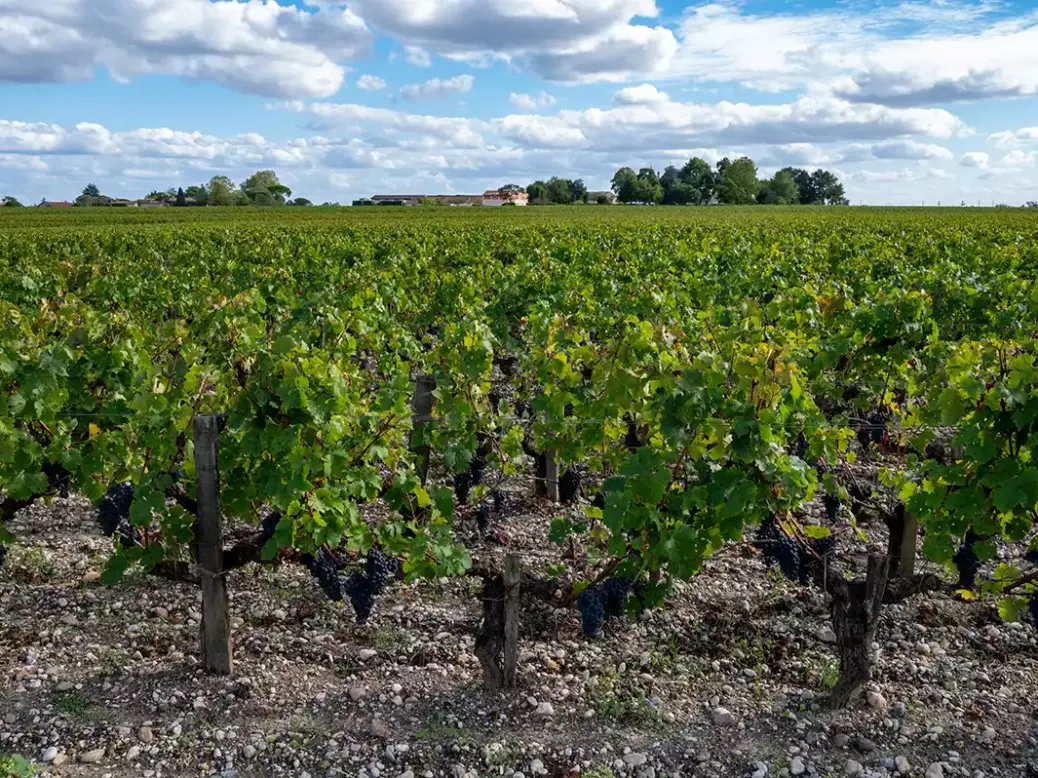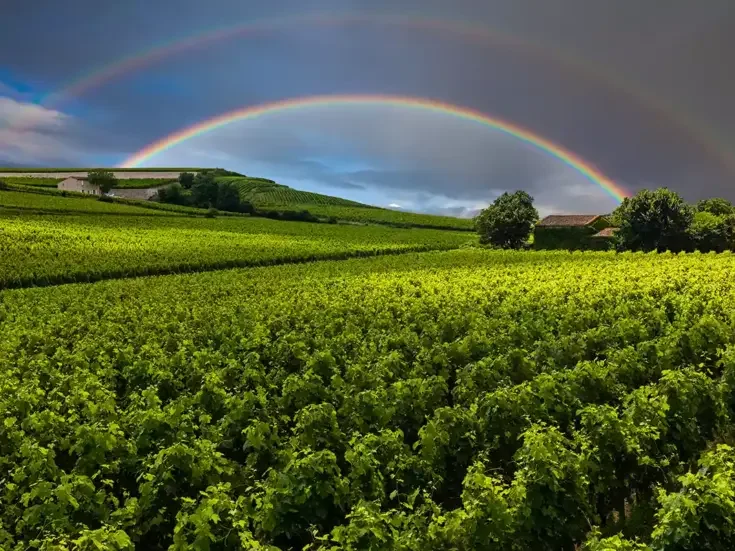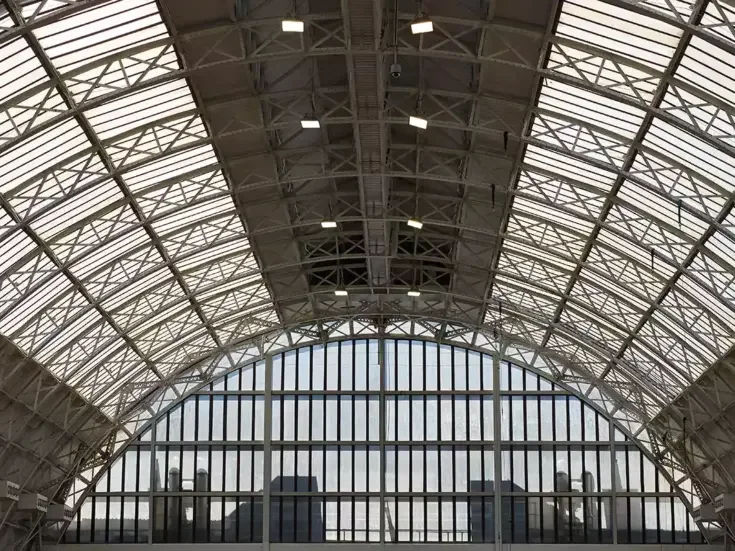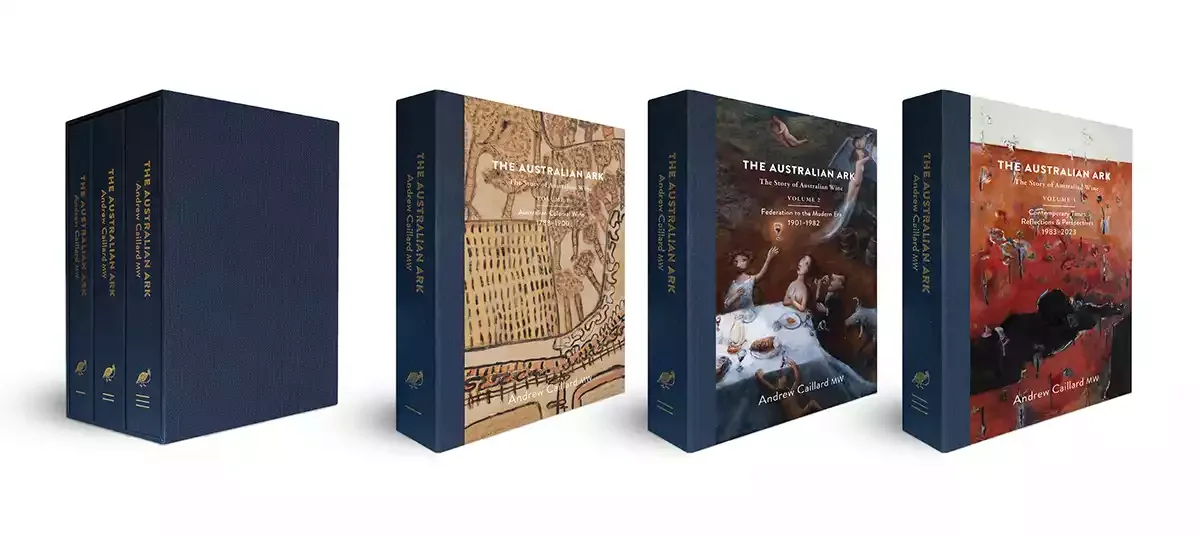
Before I get myself into trouble with the title of this column, let me say straightaway that I absolutely believe in terroir based on my experience of tasting wine, but I have never been convinced by any attempt to demonstrate a basis for it. (There might be a career to be made in debunking claims that the effects of terroir on wine have been “proved.”) What I want to consider here is the nature of the gap between subjective experience and the methods that might be used to demonstrate terroir on an objective basis.
No one who is interested in Burgundy can really doubt the existence of terroir. There are simply too many cases where two adjacent vineyards give consistently different results, even though, so far as we can tell, all variables other than the site are similar. I could fill this whole column with examples from the Côte d’Or, but one will suffice.
Cazetiers and Combe aux Moines are adjacent premiers crus in Gevrey-Chambertin. Combe aux Moines has a cooler exposure because it faces more to the north; Cazetiers extends farther down the slope and so has slightly lower average elevation with deeper soil. That may explain the difference that Combe Aux Moines harvests two days later than Cazetiers. Faiveley’s plots in the two vineyards are adjacent—“The tractor doesn’t stop,” says technical director Jérôme Flous. The vines are tended, and the two wines are vinified, in exactly the same way. Tasting these two wines side by side through a series of vintages shows there is a consistent difference: Cazetiers always has a finer impression, Combe Aux Moines a more foursquare impression. That is what I mean by terroir.
The case for terroir is much less persuasive in Bordeaux, because all wines are blends. It is hard to demonstrate nuances of terroir that persist across vintages when each vintage may have different proportions of the varieties in the blend. And the scale of production is much larger than in Burgundy, so most wines are blends from vineyards as well as varieties, and sometimes the individual plots are quite dispersed, meaning that the wine represents a variety of terroirs.
The strongest claim for distinctive terroir in Bordeaux lies with the famous gravel mounds on the Left Bank. This is a geological term; it has little to do with gravel as used in landscaping. A gravel mound consists of topsoil on compact sand, sitting on top of a gravel bed that can range from a couple of inches (a few centimeters) to 6–9ft (2–3m) in depth. Below that are alternating layers of compact sand and clay lens.
The first growths have prime positions on the gravel mounds, located on deep gravel with a relatively low water table. These favored locations are warmer than the surrounding areas, which might have been an advantage historically but may become a mixed blessing in the era of climate change. The other leading châteaux also mostly lie along the band of gravel, but they have more variation in terroir. With the exception of the first growths, there is not really any geological evidence to support a hierarchy among them, or to distinguish them from other châteaux close by. Claims that terroir has anything to do with the 1855 Classification, for example, are on very thin ground.
Chemistry and individuality
Against this background, it is interesting that a claim to detect the individuality of specific producers should come from Bordeaux. This is based on using gas chromatography to identify the range of volatile molecules in the wines from seven châteaux—four on the Left Bank and three on the Right Bank.1 (Chromatography is a method of separating compounds because they move at different rates when carried by a fluid.) Publication was accompanied by a certain amount of hullabaloo in the press—“Bordeaux Wine Snobs Have a Point, According to This Computer Model,” exclaimed the New York Times.
A press release from the University of Geneva (where the work was done in collaboration with the University of Bordeaux) made quite striking claims. “Artificial intelligence has succeeded in identifying with 100 percent precision the chemical identity of red wines coming from seven grand domaines in Bordeaux […]. This opens the way to potential new tools to combat fraud.”2
The basic claim of the article is that each estate can be distinguished by the chemical composition of its wines. This is not exactly a surprise in principle. Unless you believe in the supernatural, it should be obvious that the chemical constitution of any two wines must be different. But wine is so complex that all attempts so far to identify individual molecular markers for châteaux or regions have failed to convince, although there are certainly markers for different varieties.
The raw analysis divides the compounds being analyzed into three groups: esters (the major class of volatile compounds in wine), oak (specifically compounds introduced by aging in oak), and off-flavor (responsible for known flaws). The machine-learning technique utilized to present the results reduces the data for each château and vintage to a single point on a two-dimensional plot (one point for each vintage tested, which in effect merges the information for the three categories for that vintage). The points for each château form a relatively discrete cluster. This is interpreted as evidence that each château can be identified by a unique profile.3
The conclusions are enormously undercut by the fact that the châteaux are not identified. All we know are the appellations: one wine from Pomerol, two from St-Emilion (but we don’t know whether either or both came from the plateau or the plain, which makes a big difference), two from Pauillac, one from Margaux, and one from Pessac-Léognan. This means that a basic principle of science—that enough information is given for a study to be reproduced by others—has been breached.
A great deal of manipulation from the original data is needed to get to the simple presentation of the two-dimensional plot. “Manipulation” is not pejorative; it has become a common feature of science that—over the past, say, half-century—scientists have become further and further removed from their data by the use of complicated analytical techniques. AI is probably the ultimate technique for separating scientists from their data.
I am particularly sensitive to the issue of how much convolution is appropriate in analyzing data because I have just published a book, Inside Science, which tries to explain how science really works. One of the issues I discuss is the need for transparency and reproducibility, and how this is affected by artificial intelligence, which almost by definition makes it hard to sustain the traditional criteria for accepting scientific results. In experimental science, the best answer to the problem of validating conclusions generated by AI is to look at downstream effects, to see whether predictions following from the conclusions can be confirmed by other methods. This is not applicable here.
So, I am a bit skeptical as to whether to accept the significance of this type of analysis in principle. Basically, up to 30,000 individual data points from the original chromatogram for each wine were reduced by using artificial-intelligence methods into a single data point on the final plot. (There is nothing so conventional as an error bar to indicate the range of reliability.) For someone brought up in a traditional scientific background, accepting this takes a certain act of faith.
Different differences
To move the argument along, let’s accept for working purposes that this could be a method that reveals chemical differences between wines. In that case, what might be the basis for the difference? The most likely explanation is simply varietal constitution. The wines vary extensively. Aside from a varietal Merlot, all are blends, with Cabernet Sauvignon between 0 and 90 percent, Cabernet Franc from 0 to 56 percent, and Merlot from 0 to 100 percent. Since the Cabernets are among the more aromatic black grape varieties, this range would predict that the varietal range alone produces wide variation in the chromatograms.
We really have to dispose of the possibility that the results mostly represent varietal differences if the study is to be taken seriously as showing that the wines of individual châteaux can be distinguished. There are no controls in the conventional sense to address this issue—indeed, there are no controls for any of the variables that might affect the aromatic profile of a wine—but there are some data plots intended to show that varietal constitution cannot account for the whole explanation. These are based on computational analysis, so this is in effect a sort of manipulation squared. But if it’s right that each château can be identified by its profile, despite annual variation in the blend, it would be reasonable to suppose that varietal constitution is not the whole story.
Information about the identities of the château is beyond confusing, because the varietal compositions stated for several of the châteaux simply do not correspond with any property in the stated appellations.4 The wines for the château corresponding to Pessac-Léognan, for example, are claimed to have 75–90 percent Cabernet Sauvignon and about 5 percent Petit Verdot. It would be most interesting indeed to find a classified growth in Pessac with such a high level of Cabernet Sauvignon.
I decided to reverse engineer the identity of the châteaux from the varietal constitutions given for their wines each year.5 The results were surprising. I deduce that the wines are Lafite Rothschild, Latour, Margaux, and Haut-Brion from the Left Bank. Identification of the Right Bank châteaux is less secure, but following the pattern, it seems probable that the 100 percent Merlot might be Château Petrus (Le Pin is another possibility), while Château Cheval Blanc is definitely one of the St-Emilions. (Data for the other potential St-Emilion do not seem to conform to Ausone.) It seems that the authors focused their attention on the greatest wines of Bordeaux.
The problem is that several châteaux have been assigned to the wrong appellations. The data for Haut-Brion correspond to an estate supposed to be in St-Emilion; the data for Château Margaux correspond to the estate that is said to represent Pessac-Léognan; and the data for the château that should be in Margaux actually correspond to Lafite Rothschild. (Is it unfair to ask whether this level of confusion casts doubt on whether we can trust the extensive data reduction required to generate the basic plots on which the study rests?)
Now I have to return to the basic data, which show that data points for the three châteaux assigned to the Médoc cluster together, separated by the single château from Pessac-Léognan from a group of the clusters of châteaux from the Right Bank. It would be awfully neat if the geography of Bordeaux was reproduced in the plots representing aromatic profiles. The problem is that, basing the identification of châteaux on varietal constitutions (instead of accepting the stated appellation), châteaux from the same area are no longer clustered—for example, the estate that is the piggy in the middle (between the Médoc and the Libournais) is not in Pessac-Léognan but is really Château Margaux.6
Let’s set this muddle aside and suppose for argument’s sake at least that each château is identified by a distinct profile. If this is correct, it poses another question that casts some doubt on whether it’s valid to extrapolate further from the results. Basing the analysis on seven of the most distinctive châteaux in Bordeaux, is it reasonable to draw a general conclusion that the method allows identification of any château “with 100 percent certainty”? It is not a surprise that the greatest châteaux in Bordeaux are distinctive, but would we get equally distinctive results if the seven châteaux were all at the level of cru bourgeois or were petits châteaux?7
In addition to the varietal effects, what other factors might influence the results? Yeasts used during the fermentation, the extraction methods during fermentation, the duration of maceration, the amount of new wood used in aging, and the duration of aging are all likely to have effects. In particular, the amount of new oak is likely to have significant effects on the aromatic profile. (It seems plausible that it might be possible to identify the amount of exposure to new oak during aging by chromatographic analysis, but since there is no information about oak-aging regimes used in this particular set of results, it’s impossible to say to what extent it may have contributed.) If I am correct, however, about the identities of the châteaux, new oak will have been a prominent component and may have been close to 100 percent in all of the cases.
It is possible that the combination of the multiple effects responsible for generating aromatic differences in the wines is indeed unique for each château. But it seems premature to conclude that individual châteaux can be analyzed on the basis of results of seven out of 10,000 châteaux in Bordeaux (and not just any châteaux, but the very top, most distinctive ones, at that). The two samples from Pauillac are the only case where the châteaux are close enough for individual variation, as distinct from a generic geographical origin, to be a plausible explanation. Two châteaux are rather thin pickings for concluding that this is a valuable new method.
So, the hope of using the method to detect fraud is some way off. Perhaps it would be useful to analyze geographical origins in a broad sense, possibly to investigate claims for 100 percent usage of new oak or, even better (potentially if ambitiously), to distinguish use of barriques from staves or oak dust. If we accept the results at face value, the technique would not be useful to detect cases where one vintage is passed off as another.
There is an interesting playoff here between producers and terroir. The classic view of terroir would argue that each vineyard should be identified by common features in the aromatic profile of the wines. Would a comparable analysis of Burgundy identify groups of wines according to geography (that is, terroir) or according to producers (winemaking)? I submit that it’s impossible to develop any reliable interpretation of the results without taking this concern under advisement. I certainly don’t exclude the possibility that there is something interesting here, but the case is not proven yet, and the claims made for the results are exaggerated, to say the least (not, unfortunately, an uncommon situation in science today).
Terroir as an act of faith
Suppose that we wanted to use this type of analysis to show that terroir produces a specific chromatographic profile. How would we proceed? The first critical demand is that the vineyards in question should be planted with the same (preferably sole) variety and that the vines should be the same cultivar and have the same age. Obviously, the vineyards should be cultivated in the same way. Then winemaking should be identical in all cases. It would actually be better if the wines were aged in oak-free conditions so as to reduce extraneous effects on the aromatic profile. Those conditions are sufficiently difficult to achieve that I do not expect anyone to satisfy them in the foreseeable future.
Another crucial feature is needed to distinguish the effects of terroir from the effects of winemaking. Grapes should be analyzed immediately after harvesting, as well as analyzing completed wines, for which the most appropriate stage of analysis is probably bottling. If any differences are due to terroir, surely they should show in the grapes. In principle, differences could be either magnified or reduced by fermentation. (Producers who use fermentation by indigenous yeasts, which they regard as part of the terroir, would argue that adding a specific yeast strain for fermentation reduces the impact of terroir.) Analysis of grapes by itself would be open to the criticism that there’s no proof that any differences actually have significant effects on the organoleptic profile of the wine, but analyzing only wine leaves greater possibilities that effects are due to specifics of winemaking—perhaps even to unremarked features.
Yeasts are the most obvious source of aromatic variability in wine—in fact, by far the greatest proportion of aromatic compounds are produced by fermentation rather than being present in the grape. (I emphasize aromatic compounds because that is what chromatographic analysis focuses on.) In fact, consider the extreme case of Brett.
Brett, caused when the yeast Brettanomyces contaminates a wine, has a particularly pungent aromatic profile, marked by the compounds 4-ethylphenol and 4-ethylguaiacol. During the 1980s and ’90s, the wines of several châteaux in Bordeaux were marked by Brett. This was due not to adventitious infection of individual bottles but to contamination of the wineries. (Would this be regarded as an adjunct to terroir?) During that period, this new method would no doubt have been very successful at distinguishing the wines of the infected châteaux from the wines of their uninfected neighbors. To a lesser extent, the yeasts used in fermentation could well contribute to distinctive results in individual châteaux.
(I don’t want to get into the issue of whether yeasts are part of terroir. Personally, I do not think so, because all the evidence says that the strains of indigenous yeasts differ from year to year. But if they were included, would that mean that Brett was part of the terroir of some châteaux, albeit transiently, during the period of infection? If that is an oxymoron, it points to the difficulty of the situation, which is why it is best to leave yeast out of terroir.)
Three years ago, I analyzed some exaggerated claims for the “irrefutable proof” of terroir by chemical analysis (“How to Prove Terroir Exists (and Do We Really Want to?)” in WFW 72, pp.110–11).8 This work analyzed Malbec grown in several different single vineyards in Mendoza. I concluded that the results probably demonstrated that chemical differences are produced by altitude, most likely because the exposure to ultraviolet with increasing altitude increases tannins and total phenols due to thickening of the grape skins. Here is another demonstration that the laws of physics apply to grape growing but, I am afraid, not at all a demonstration of any effect of terroir other than altitude.
Would terroir exist or, at least, would it manifest itself in the same way if a region changed the varieties it grows? Suppose we are in 2050. It is much hotter everywhere, so hot in Bordeaux that the authorities have finally relented on their commitment to Cabernet Sauvignon and Merlot and have allowed Syrah to be grown. Suppose that Syrah has in fact become the majority grape. Would the first growths still be the top wines? Would the difference between Pauillac and St-Julien still show as plushness versus finesse? Would the differences be different?
Some years ago, I asked Frédéric Engerer at Château Latour if he thought its character would show in the same way with a different variety. “Maybe we should plant some Syrah, but it is a bit complicated,” he said. “You would see the same effect. The nobility of the whole thing is just the terroir. The Cabernet Sauvignon is just the instrument; it is just the tool to express differences between terroirs. I would think [the same] would be true with another grape variety.”
Terroir expresses itself through the variety. Each variety has a favored terroir in which it produces its best results: gravel for Cabernet Sauvignon, limestone for Pinot Noir, granite for Syrah. When we talk about effects of terroir, we are mostly describing what happens when a variety grows on variations of its favorite terroir. I do not think it is axiomatic that it would show the same sensitivity to other terroirs, or that the effects of different terroirs would necessarily be the same on every variety. Of course, that is not an argument against the importance of terroir—quite the reverse—but it might mean that there needs to be some caution about extrapolating the results from individual situations that are likely to have been highly selected.
So, does terroir exist? Yes. Can we demonstrate it yet by any objective means? No.
I have to admit that terroir remains an act of faith. This is not entirely a comfortable position for a scientist, but it’s better than accepting the validity of inadequate science.
Notes
1. M Schartner, JM Beck, J Laboyrie, L Riquier, S Marchand, and A Pouget, “Predicting Bordeaux Red Wine Origins and Vintages from Raw Gas Chromatograms,” Communications Chemistry 6, article 247 (2023); https://doi.org/10.1038/s42004-023-01051-9
2. In claiming to predict the origins of a wine from raw gas chromatograms, the title of the paper is misleading. In fact, very complicated calculations are needed to produce the data plots that are claimed to show the difference.
3. The samples represent years from 1990 to 2007 and were collected from the châteaux in 2019. It is very surprising that there should not be more vintage variation in the results, given that the original objective of the exercise was to investigate aging in red Bordeaux. Justine Laboyrie, “Composition et origine du bouquet de vieillissement des vins rouges de Bordeaux. Influences du terroir dans l’expression aromatique des vins vieux,” Médecine Humaine et Pathologie, Université de Bordeaux, 2020.
4. The châteaux are simply identified as A (Pomerol), B and C (St-Emilion), D and E (Pauillac), F (Margaux), and G (Pessac-Léognan). In the table giving varietal constitutions, however, the châteaux are identified as A, B, F, G, S, T, and V. We can only guess how S, T, and V might correspond to C, D, and E. From the varietal compositions given for the wine samples, it appears that B is in fact Haut-Brion, F is in fact Lafite Rothschild, G is Château Margaux, and T is Latour. S could be Petrus, V is Cheval Blanc, and A cannot be identified. (I deduce that it is a château in St-Emilion—though it is stated to be in Pomerol—which has the capacity to consistently generate a wine from exactly 50 percent Merlot and 50 percent Cabernet Franc every year.)
5. I assumed that the data correspond to a specific château if there is an exact match in each year between the varietal composition stated for the sample and that reported by the château, with no more than two years failing to conform.
6. If the IDs of the samples used for the main analysis are correct, the conclusions are suspect (because the groups of clusters would represent different appellations from those identified by the authors). So far as it’s possible to make out from the IDs, it seems that the supposed Right Bank group actually includes Haut-Brion; the in-between château is Margaux, not one in Pessac-Léognan (as described in main text above); and the supposed Médoc group must include at least one Right Bank wine.
7. By identifying the château through varietal composition, I deduce that the wines that have been analyzed are the grand vins, not the second wines, but this also makes the point that it would be interesting to compare each grand vin with the second wine.
8. R Urvieta, G Jones, F Buscema, R Bottini, & A Fontana, “Terroir and Vintage Discrimination of Malbec Wines Based on Phenolic Composition Across Multiple Sites in Mendoza, Argentina,” Scientific Reports volume 11 (2021), article 2863.







